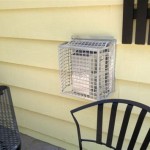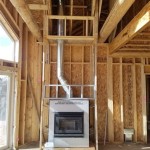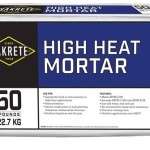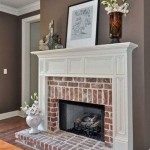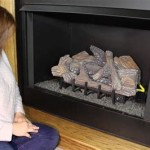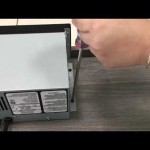```html
Horizontal Gas Fireplace: A Modern Heating Solution
Horizontal gas fireplaces have emerged as a popular choice for homeowners and designers seeking a blend of aesthetic appeal and efficient heating. Characterized by their elongated, wider-than-tall firebox, these fireplaces offer a contemporary aesthetic and practical advantages in various living spaces. Their design allows for a captivating, panoramic view of the flames, making them a focal point in any room.
The defining characteristic of a horizontal gas fireplace is its elongated firebox. This wider format presents a more expansive and dramatic view of the flames compared to traditional vertical fireplaces. This visual impact is a primary reason for their growing popularity in modern homes. Furthermore, the horizontal design can complement the architectural lines of contemporary spaces, enhancing the overall aesthetic harmony of the room. Beyond aesthetics, the design impacts heat distribution and installation considerations, influencing the overall functionality and suitability of the fireplace in different environments.
Horizontal gas fireplaces utilize natural gas or propane as fuel sources. The combustion of these fuels generates heat, which is then distributed into the room using various mechanisms. These mechanisms can include natural convection, forced air systems, or radiant heat. The efficiency of a gas fireplace is typically measured by its AFUE (Annual Fuel Utilization Efficiency) rating, which indicates the percentage of fuel converted into usable heat. Higher AFUE ratings signify greater energy efficiency and lower operating costs. Understanding the fuel options and efficiency ratings is crucial for homeowners to make informed decisions about their heating requirements and environmental impact.
Advantages of Horizontal Gas Fireplaces
Horizontal gas fireplaces offer several key advantages that contribute to their increasing popularity. These benefits range from aesthetic appeal to practical considerations such as installation flexibility and heating efficiency.
One of the most significant advantages is their modern aesthetic. The elongated firebox creates a visually striking focal point, enhancing the ambiance of the room. This design is particularly well-suited for contemporary and minimalist interiors. The wide flame presentation offers a more immersive and captivating experience compared to traditional fireplaces, contributing to a sense of warmth and relaxation. The sleek and streamlined design can also complement other modern design elements in the space, such as clean lines, neutral colors, and minimalist furniture.
Installation flexibility is another significant benefit. Horizontal gas fireplaces can be installed in a variety of locations, including walls, corners, and even as room dividers. This versatility allows for creative design possibilities and the ability to customize the fireplace to suit the specific layout of the room. Some models are designed for direct vent installation, which simplifies the venting process and reduces the need for extensive chimney construction. This flexibility makes horizontal gas fireplaces a viable option for a wider range of homes, including those without existing chimney systems.
Many horizontal gas fireplaces offer excellent heating efficiency. Modern models are often equipped with advanced features such as programmable thermostats, remote control operation, and adjustable flame heights. These features allow homeowners to control the heat output and energy consumption, optimizing the fireplace for comfort and efficiency. Some models also incorporate features like sealed combustion systems, which draw air from outside the home, further enhancing efficiency and improving indoor air quality. The combination of efficient heating and user-friendly controls makes horizontal gas fireplaces a practical and cost-effective heating solution.
Factors to Consider When Choosing a Horizontal Gas Fireplace
Selecting the right horizontal gas fireplace requires careful consideration of several factors. These factors include the size of the room, the desired heat output, the venting requirements, and the aesthetic preferences of the homeowner. A thorough assessment of these aspects will ensure that the chosen fireplace meets the specific needs and expectations of the user.
The size of the room is a crucial factor in determining the appropriate BTU (British Thermal Unit) rating of the fireplace. A fireplace that is too small will not adequately heat the space, while a fireplace that is too large may overheat the room and waste energy. As a general guideline, a larger room will require a fireplace with a higher BTU rating. It is recommended to consult with a qualified HVAC professional or fireplace specialist to determine the optimal BTU rating for the specific room size and climate conditions. Furthermore, the insulation level of the room can impact the heating requirements, with poorly insulated rooms requiring higher BTU ratings to maintain a comfortable temperature.
Venting requirements are another important consideration. Gas fireplaces typically require venting to exhaust combustion gases safely outside the home. There are several types of venting systems available, including direct vent, B-vent, and vent-free systems. Direct vent systems are generally considered the safest and most efficient option, as they draw air from outside the home and exhaust combustion gases directly outside. B-vent systems require a chimney and are typically used in older homes. Vent-free systems do not require venting, but they are subject to stricter regulations and may not be suitable for all homes due to concerns about indoor air quality. It is essential to comply with all local building codes and regulations regarding venting requirements when installing a gas fireplace.
Aesthetic preferences play a significant role in the selection process. Horizontal gas fireplaces are available in a wide range of styles, finishes, and materials. Homeowners can choose from traditional designs with realistic log sets to contemporary designs with glass or stone media. The finish of the fireplace, such as black, stainless steel, or brushed nickel, can also complement the existing décor of the room. The type of media used in the firebox, such as logs, glass beads, or decorative stones, can further enhance the visual appeal of the fireplace. It is important to select a fireplace that not only provides efficient heating but also complements the overall aesthetic of the space and reflects the personal style of the homeowner.
Installation and Maintenance of Horizontal Gas Fireplaces
Proper installation and regular maintenance are essential for the safe and efficient operation of a horizontal gas fireplace. These procedures ensure that the fireplace functions optimally, minimizes the risk of malfunction, and prolongs the lifespan of the unit.
Installation should always be performed by a qualified and licensed technician. This ensures that the fireplace is installed correctly and that all safety codes and regulations are met. The technician will connect the gas line, install the venting system, and test the fireplace to ensure that it is functioning properly. Improper installation can lead to gas leaks, carbon monoxide poisoning, and other serious hazards. It is crucial to verify the technician's credentials and experience before hiring them to install the fireplace. Furthermore, obtaining the necessary permits and inspections is essential to ensure compliance with local building codes.
Regular cleaning and maintenance are necessary to keep the fireplace in optimal condition. The frequency of maintenance tasks will depend on the frequency of use and the specific model of the fireplace. However, some common maintenance tasks include cleaning the glass front, inspecting the burner assembly, and checking the venting system for obstructions. The glass front should be cleaned regularly to remove soot and debris, which can reduce the visibility of the flames. The burner assembly should be inspected for signs of wear or damage, and any necessary repairs should be performed promptly. The venting system should be checked for obstructions, such as leaves, twigs, or bird nests, which can impede airflow and increase the risk of carbon monoxide poisoning. It is recommended to consult the manufacturer's instructions for specific maintenance recommendations.
Annual professional inspection and servicing are highly recommended. A qualified technician will inspect the fireplace for any potential problems, clean the burner assembly, check the gas pressure, and test the safety features. This comprehensive inspection can identify and address potential issues before they become major problems, ensuring the safe and efficient operation of the fireplace. Regular professional servicing can also extend the lifespan of the fireplace and prevent costly repairs in the future. Scheduling an annual inspection with a reputable fireplace service provider is a worthwhile investment in the safety and longevity of the appliance.
```
Enviro S Gas C72 Linear Fireplace

Linear Direct Vent Complete Low Profile Design 35 Fireplace With Blower Fan And Multi Function Remote Drl3535 F4183 F4896

Linear Gas Fireplaces Valor

Enviro S Gas C72 Linear Fireplace

Gas Fireplaces Hearth And Home Pe Richmond Va

Guide To Direct Vent Gas Fireplaces

Zero Clearance Fireplaces Valor Gas

Linear Direct Vent Complete Low Profile Design 35 Fireplace With Blower Fan And Multi Function Remote Drl3535 F4183 F4896

L3 Linear Gas Fireplace Valor Fireplaces

Bellfires Horizon Bell Xxl 3 Inset Gas Fireplace Bonfire Fireplaces
Related Posts

